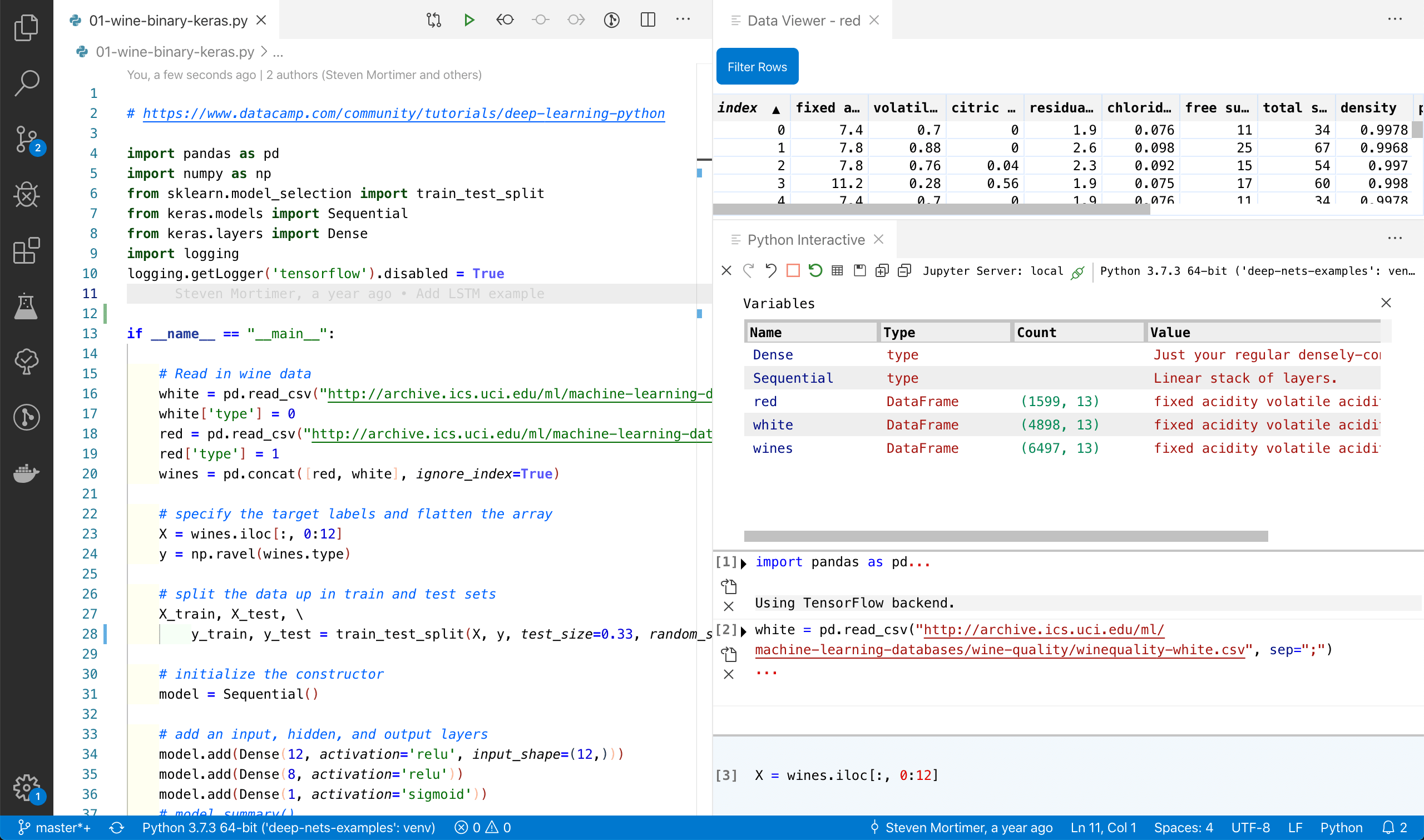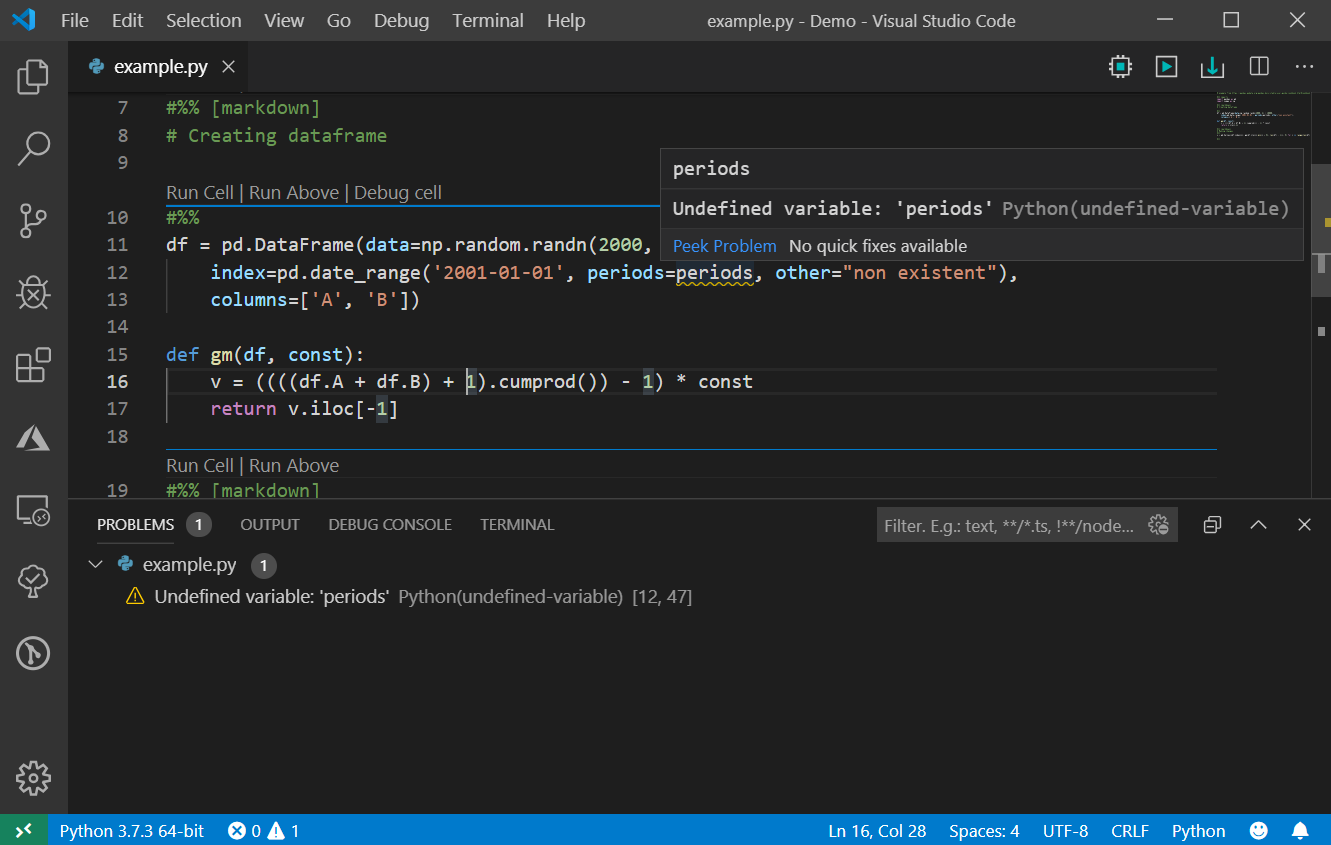By default, installing the Python development workload in Visual Studio 2017 and later also installs Python 3 (64-bit). You can optionally choose to install 32-bit and 64-bit versions of Python 2 and Python 3, along with Miniconda (Visual Studio 2019) or Anaconda 2/Anaconda 3 (Visual Studio 2017), as described in Installation.
Alternately, you can install standard python interpreters from the Add Environment dialog. Select the Add Environment command in the Python Environments window or the Python toolbar, select the Python installation tab, indicate which interpreters to install, and select Install.

You can also manually install any of the interpreters listed in the table below outside of the Visual Studio installer. For example, if you installed Anaconda 3 before installing Visual Studio, you don't need to install it again through the Visual Studio installer. You can also install an interpreter manually if, for example, a newer version of available that doesn't yet appear in the Visual Studio installer.
Note
- Visual Studio supports Python version 2.7, as well as version 3.5 and greater. While it is possible to use Visual Studio to edit code written in other versions of Python, those versions are not officially supported and features such as IntelliSense and debugging might not work.
- See more: visual studio code python repl, please configure your git username and email. Visual studio code, visual studio code python uml, visual studio code python, how to run python in visual studio code, visual studio code opencv python, visual studio code python virtualenv, python extension for visual studio code, how to run.
Capturing user input via Console Application whist debugging a Python application is possible when using a Terminal (console window) to capture the input. There are two options for using terminals in Visual Studio Code when debugging: Option 1: Use the Visual Studio Code Terminal (integrated terminal). Python Path and Version Python in Visual Studio Code Python Path and Version By default the extension uses the Python interpreter available in the current path. You could always change this by specifying the path to the interpreter in the user or worksapce settings.
Visual Studio supports Python version 2.7, as well as version 3.5 to 3.7. While it is possible to use Visual Studio to edit code written in other versions of Python, those versions are not officially supported and features such as IntelliSense and debugging might not work.
For Visual Studio 2015 and earlier, you must manually install one of the interpreters.
Visual Studio (all versions) automatically detects each installed Python interpreter and its environment by checking the registry according to PEP 514 - Python registration in the Windows registry. Python installations are typically found under HKEY_LOCAL_MACHINESOFTWAREPython (32-bit) and HKEY_LOCAL_MACHINESOFTWAREWOW6432NodePython (64-bit), then within nodes for the distribution such as PythonCore (CPython) and ContinuumAnalytics (Anaconda).
If Visual Studio does not detect an installed environment, see Manually identify an existing environment.
Visual Studio shows all known environments in the Python Environments window, and automatically detects updates to existing interpreters.
| Interpreter | Description |
|---|---|
| CPython | The 'native' and most commonly-used interpreter, available in 32-bit and 64-bit versions (32-bit recommended). Includes the latest language features, maximum Python package compatibility, full debugging support, and interop with IPython. See also: Should I use Python 2 or Python 3?. Note that Visual Studio 2015 and earlier do not support Python 3.6+ and can give errors like Unsupported python version 3.6. Use Python 3.5 or earlier instead. |
| IronPython | A .NET implementation of Python, available in 32-bit and 64-bit versions, providing C#/F#/Visual Basic interop, access to .NET APIs, standard Python debugging (but not C++ mixed-mode debugging), and mixed IronPython/C# debugging. IronPython, however, does not support virtual environments. |
| Anaconda | An open data science platform powered by Python, and includes the latest version of CPython and most of the difficult-to-install packages. We recommend it if you can't otherwise decide. |
| PyPy | A high-performance tracing JIT implementation of Python that's good for long-running programs and situations where you identify performance issues but cannot find other resolutions. Works with Visual Studio but with limited support for advanced debugging features. |
| Jython | An implementation of Python on the Java Virtual Machine (JVM). Similar to IronPython, code running in Jython can interact with Java classes and libraries, but may not be able to use many libraries intended for CPython. Works with Visual Studio but with limited support for advanced debugging features. |
Developers that want to provide new forms of detection for Python environments, see PTVS Environment Detection (github.com).
Move an interpreter
Visual Studio Code Python Opencv

If you move an existing interpreter to a new location using the file system, Visual Studio doesn't automatically detect the change.
Visual Studio Code Python Library
If you originally specified the location of the interpreter through the Python Environments window, then edit its environment using the Configure tab in that window to identify the new location. See Manually identify an existing environment.
If you installed the interpreter using an installer program, then use the following steps to reinstall the interpreter in the new location:
- Restore the Python interpreter to its original location.
- Uninstall the interpreter using its installer, which clears the registry entries.
- Reinstall the interpreter at the desired location.
- Restart Visual Studio, which should auto-detect the new location in place of the old location.
Following this process ensures that the registry entries that identify the interpreter's location, which Visual Studio uses, are properly updated. Using an installer also handles any other side effects that may exist.
Visual Studio Python Tutorial
See also
